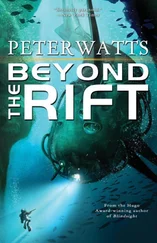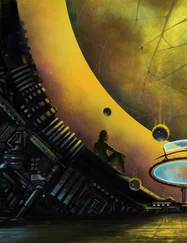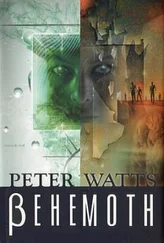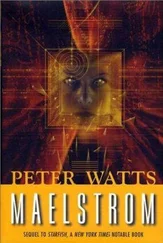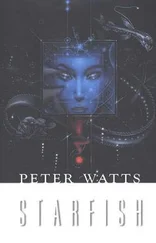While a number of people have pointed out the various costs and drawbacks of sentience, few if any have taken the next step and wondered out loud if the whole damn thing isn’t more trouble than it’s worth. Of course it is, people assume; otherwise natural selection would have weeded it out long ago. And they’re probably right. I hope they are. Blindsight is a thought experiment, a game of Just suppose and What if . Nothing more.
On the other hand, the dodos and the Steller sea cows could have used exactly the same argument to prove their own superiority, a thousand years ago: if we’re so unfit, why haven’t we gone extinct? Why? Because natural selection takes time, and luck plays a role. The biggest boys on the block at any given time aren’t necessarily the fittest, or the most efficient, and the game isn’t over. The game is never over; there’s no finish line this side of heat death. And so, neither can there be any winners. There are only those who haven’t yet lost.
Cunningham’s stats about self-recognition in primates: those too are real. Chimpanzees have a higher brain-to-body ratio than orangutans, [130] Aiello, L., and C. Dean. 1990. An introduction to human evolutionary anatomy. Academic Press, London.
yet orangs consistently recognise themselves in mirrors while chimps do so only half the time. [131] Gallup, G.G. (Jr.). 1997. On the rise and fall of self-conception in primates. In The Self Across Psychology—self-recognition, self-awareness, and the Self Concept. Annals of the NY Acad. Sci. 818:4-17.
Similarly, those nonhuman species with the most sophisticated language skills are a variety of birds and monkeys—not the presumably “more sentient” great apes who are our closest relatives. [132] Hauser, M.D., N. Chomsky, and W.T. Fitch. 2002. The faculty of language: what is it, who has it, and how did it evolve? Science 298: 1569-1579.
, [133] Carstairs-McCarthy, A. 2004. Many perspectives, no concensus—a review of Language Evolution , by Christiansen & Kirby (Eds). Science 303:1299-1300.
If you squint, facts like these suggest that sentience might almost be a phase, something that orangutans haven’t yet grown out of but which their more-advanced chimpanzee cousins are beginning to. (Gorillas don’t self-recognise in mirrors. Perhaps they’ve already grown out of sentience, or perhaps they never grew into it.)
Of course, Humans don’t fit this pattern. If it even is a pattern. We’re outliers: that’s one of the points I’m making.
I bet vampires would fit it, though. That’s the other one.
Finally, some very timely experimental support for this unpleasant premise came out just as Blindsight was being copy edited: it turns out that the unconscious mind is better at making complex decisions than is the conscious mind. [134] Dijksterhuis, A., et al. 2006. Science 311:1005-1007.
The conscious mind just can’t handle as many variables, apparently. Quoth one of the researchers: “At some point in our evolution, we started to make decisions consciously, and we’re not very good at it.” [135] Vince, G 2006. “’Sleeping on it’ best for complex decisions.” Newscientist.com, http://www.newscientist.com/article/dn8732-sleeping-on-it-best-for-complex-decisions.html .
MISCELLANEOUS AMBIENCE (BACKGROUND DETAILS, BAD WIRING, AND THE HUMAN CONDITION)
The child Siri Keeton was not unique: we’ve been treating certain severe epilepsies by radical hemispherectomy for over fifty years now. [136] Devlin, A.M., et al. 2003. Clinical outcomes of hemispherectomy for epilepsy in childhood and adolescence Brain 126: 556-566.
Surprisingly, the removal of half a brain doesn’t seem to impact IQ or motor skills all that much (although most of hemispherectomy patients, unlike Keeton, have low IQs to begin with). [137] Pulsifer, M,B., et al. 2004. The cognitive outcome of hemispherectomy in 71 children. Epilepsia 45: 243-54.
I’m still not entirely sure why they remove the hemisphere; why not just split the corpus callosum, if all you’re trying to do is prevent a feedback loop between halves? Do they scoop out one half to prevent alien hand syndrome—and if so, doesn’t that imply that they’re knowingly destroying a sentient personality?
The maternal-response opioids that Helen Keeton used to kickstart mother-love in her damaged son was inspired by recent work on attachment-deficit disorders in mice. [138] Moles, A., Keiffer, B.L., and F.R. D’Amato. 2004. Deficit in attachment behavior in mice lacking the μ-Opioid receptor gene. Science 304: 1983-1986.
The iron-scavenging clouds that appear in the wake of the Firefall are based on those reported by Plane et al . [139] Plane, J.M.C., et al. 2004. Removal of meteoric iron on polar mesospheric clouds. Science 304: 426-428.
I trawled The Gang of Four’s linguistic jargon from a variety of sources. [140] Hauser, M.D., N. Chomsky, and W.T. Fitch. 2002. The faculty of language: what is it, who has it, and how did it evolve? Science 298: 1569-1579.
, [141] Fitch, W.T., and M.D. Hauser. 2004. Computational Constraints on Syntactic Processing in a Nonhuman Primate. Science 303:377-380.
, [142] Premack, D. 2004. Is Language the Key to Human Intelligence? Science 303: 318-320.
, [143] Holden, C. 2004. The origin of speech. Science 303: 1316-1319.
The multilingual speech patterns of Theseus ’ crew (described but never quoted, thank God) were inspired by the musings of Graddol, [144] Graddol, D. 2004. The future of language. Science 303: 1329-1331.
who suggests that science must remain conversant in multiple grammars because language leads thought, and a single “universal” scientific language would constrain the ways in which we view the world.
The antecedent of Szpindel’s and Cunningham’s extended phenotypes exists today, in the form of one Matthew Nagel. [145] BBC News. 2005. Brain chip reads man’s thoughts. March 31. Story online at http://news.bbc.co.uk/go/pr/fr/-/1/hi/health/4396387.stm .
The spliced prosthetics that allow them to synesthetically perceive output from their lab equipment hails from the remarkable plasticity of the brain’s sensory cortices: you can turn an auditory cortex into a visual one by simply splicing the optic nerve into the auditory pathways (if you do it early enough). [146] 146. Weng, J. et al. 2001. Autonomous Mental Development by Robots and Animals. Science 291: 599-600.
, [147] Von Melchner, L, et al. 2000. Visual behaviour mediated by retinal projections directed to the auditory pathway. Nature 404: 871-876.
Bates’ carboplatinum augments have their roots in the recent development of metal musculature. [148] Baughman, R.H. 2003. Muscles made from metal. Science 300: 268-269.
, [149] Weissmüller, J., et al. 2003. Change-induced reversible strain in a metal. Science 300: 312-315.
Sascha’s ironic denigration of TwenCen psychiatry hails not only from (limited) personal experience, but from a pair of papers [150] Piper, A., and Merskey, H. 2004. The Persistence of Folly: A Critical Examination of Dissociative Identity Disorder. Part I. The Excesses of an Improbable Concept. Can. J. Psychiatry 49: 592-600.
, [151] Piper, A., and Merskey, H. 2004. The Persistence of Folly: A Critical Examination of Dissociative Identity Disorder. Part II. The Defence and Decline of Multiple Personality or Dissociative Identity Disorder. Can. J. Psychiatry 49: 678–683.
that strip away the mystique from cases of so-called multiple personality disorder . (Not that there’s anything wrong with the concept; merely with its diagnosis.) The fibrodysplasia variant that kills Chelsea was based on symptoms described by Kaplan et al. [152] Kaplan, F.S., et al. 1998. The Molecules of Immobility: Searching for the Skeleton Key. Univ. Pennsylvania Orthopaedic J. 11: 59-66. Available online at http://www.uphs.upenn.edu/ortho/oj/1998/oj11sp98p59.html . [This link is gone. The article is now available as a PDF file here: http://www.upoj.org/site/files/v11/v11_12.pdf . More recent information can be found in this news release: http://www.uphs.upenn.edu/news/News_Releases/apr06/FOP.htm - update by EH, 2011-07-13 ].
Читать дальше




